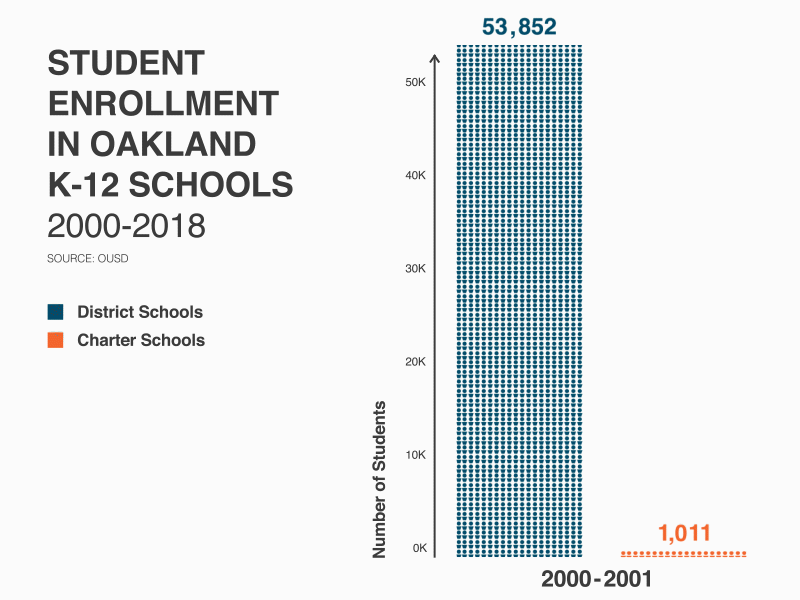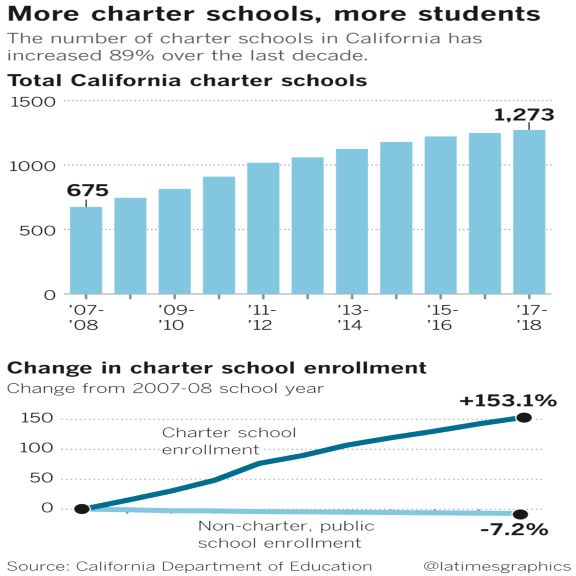Charter school growth slowing in Sacramento. What’s driving the statewide trend?
After years of vigorous growth, charter school enrollment is showing early signs of decline in Sacramento County just as state lawmakers zero in on ways to limit the industry’s swift expansion in California.
New enrollment figures show charter school enrollment grew by 2.6 percent this school year in Sacramento County – the slowest rate in at least the last decade – and climbed by 4 percent statewide.
Still, twice as many students are taught in charter school programs now than during the 2007-2008 school year, according to data from the California Department of Education. More than 33,000 Sacramento County students are now enrolled in charter programs, which includes virtual schooling and independent study, accounting for 13 percent of the student population.
The slowdown has not resulted in any boon for the county’s public schools, which have seen meager or negative growth since 2010, data shows. The trend lays bare a new reality in K-12 education where parents are exercising choice and privately-run and public schools are trying to accommodate them.
Although Anastasia Harrison lives walking distance from an Elk Grove public elementary school, she enrolled her children in the nearby California Montessori Project, which is home to 500 students. The school also has other campuses throughout the Sacramento region.
The school teaches children in block grades, so Harrison’s third-grade daughter is in a class with first- and second-graders. Entrance to the school is tight but she said the lottery and waitlist didn’t discourage her from applying.
“I was a little concerned about public schools. I told myself that if they didn’t get into the charter school, I was going to homeschool them,” Harrison said. “It’s not a traditional classroom where kids may get bored. My kids are able to work ahead, and when they help the younger kids, it reinforces what they already know.”
Many parents want specialized programs that emphasize different learning styles and second languages. Others feel a public education may not offer their children enough. Districts, perhaps in a race to keep up, have pivoted to charters, too, converting some of their traditional neighborhood schools.
That’s one of the reasons behind the seemingly explosive growth, said Willow Herrington, vice CONTINUE READING: How popular are charter schools in California? | The Sacramento Bee
How Charter Schools Became Such a Big Player in California's Education System | The California Report | KQED News - https://www.kqed.org/news/11729643/how-charter-schools-became-such-a-big-player-in-californias-education-system by @MGreenKQED on @kqed
Fueled by a large influx of outside funding from wealthy donors and a succession of charter-friendly district superintendents and city and state officials, new charter schools in Oakland proliferated, particularly in the decade after 2000, when the number of charter schools in the city more than tripled.

And while certainly not the sole cause of Oakland Unified’s perennial budget woes, the rise of charters is a factor that has undeniably contributed to the district's fiscal distress. Because OUSD receives per-pupil state funding, having fewer students means a lot less money for the district, even as its school building and administrative costs remain roughly the same. The Los Angeles and Oakland teachers unions frequently cite a 2018 report by the left-leaning Bay Area policy center, In The Public Interest, estimating that charter growth cost L.A. Unified more than $508 million in 2014-15 and Oakland Unified $57 million in 2016-17.




